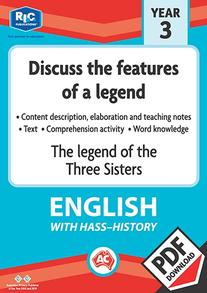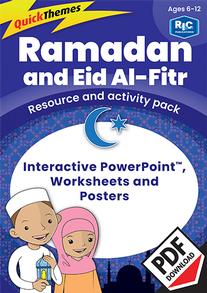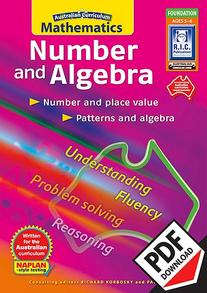$94.95
Comprehension text – Fossil poetry – Year 3 digital unit
Preview Book
- Format: Lesson plans and units
- Series: Australian Curriculum
- Code: RIC-30060
- Subject: English
- Level: Year 3
Price:
$2.00
Quantity:
This is a 7-page unit from the Developing Comprehension skills and word knowledge series that covers:
Text
- Listen to and contribute to conversations and discussions to share information and ideas and negotiate in collaborative situations (ACELY1676)
.png)
- Draw connections between personal experiences and the worlds of texts, and share responses with others (ACELT1596)
.png)
Comprehension
- Read an increasing range of different types of texts by combining contextual, semantic, grammatical and phonic knowledge, using text processing strategies, for example monitoring, predicting, confirming, re-reading, reading on and self-correcting (ACELY1679)
.png)
- Use comprehension strategies to build literal and inferred meaning and begin to evaluate texts by drawing on a growing knowledge of context, text structures and language features (ACELY1680)
.png)
- Understand how different types of texts vary in use of language choices, depending on their prupose and context (for example, tense and types of sentences) (ACELA1478)
.png)
- Understand that paragraphs are a key organisational feature of written texts (ACELA1479)
.png)
Word knowledge
- Know how to use common prefixes and suffixes, and generalisations for adding a suffix to a base word (ACELA1827)
.png)
- Learn extended and technical vocabulary and ways of expressing opinion including modal verbs and adverbs (ACELA1484)
.png)
- Understand how to apply knowledge of letter-sound relationships, syllables, and blending and segmenting to fluently read and write multisyllabic words with more complex letter patterns (ACELA1826)
.png)
- Understand how to use letter-sound relationships and less common letter patterns to spell words (ACELA1485)
.png)
- Recognise and know how to write most high frequency words including some homophones (ACELA1486)
.png)
Links to other curriculum areas
Humanities and Social Sciences – Geography
- The similarities and differences between places in terms of their type of settlement, demographic characteristics and the lives of the people who live there, and people’s perceptions of these places (ACHASSK069)
.png)
Each individual text type covers a number of content descriptions across the Language, Literature and Literacy strands of Australian Curriculum English. The detailed lesson plans save valuable planning time and allow for individual student differences. Use all, or some, of the ideas provided to cater to the needs of your class.
**This ebook is not transferable, nor can it be on-sold or uploaded to an intranet site. For full copyright details, please see the Copyright Notice outlined in the ebook or refer to the Copyright Agency Limited www.copyright.com.au
No reviews have been added for this product yet.































